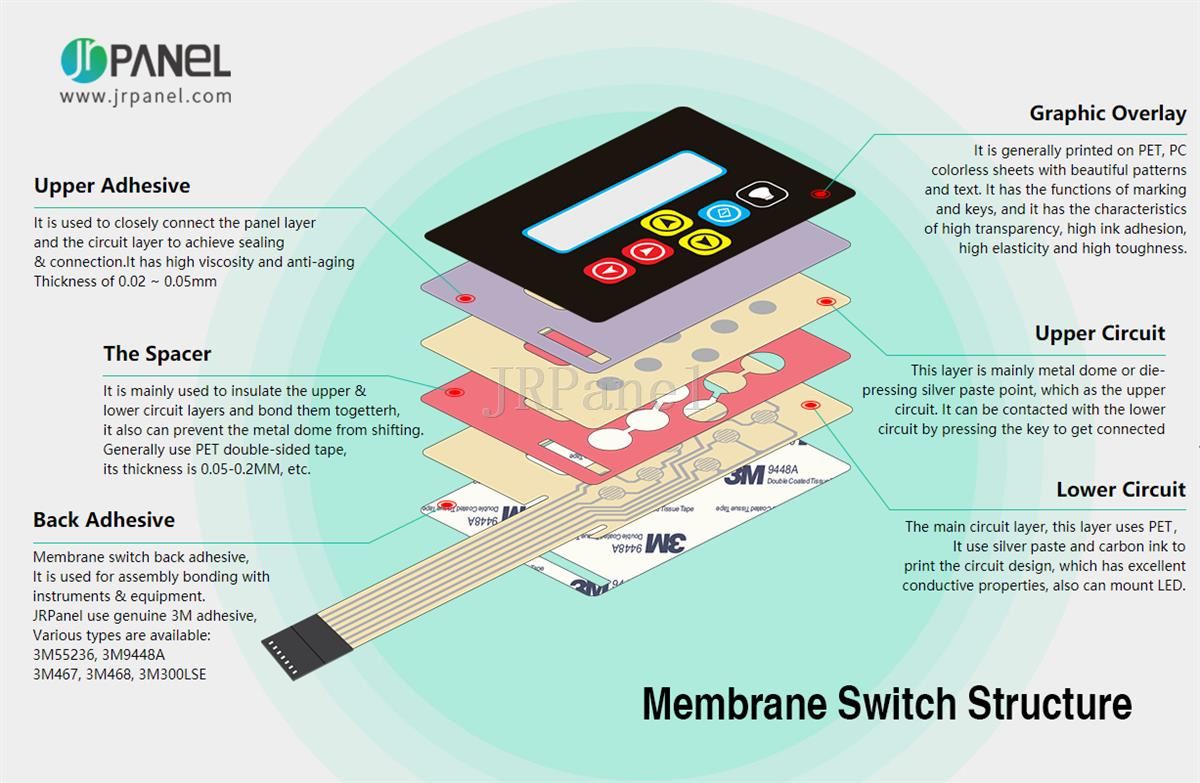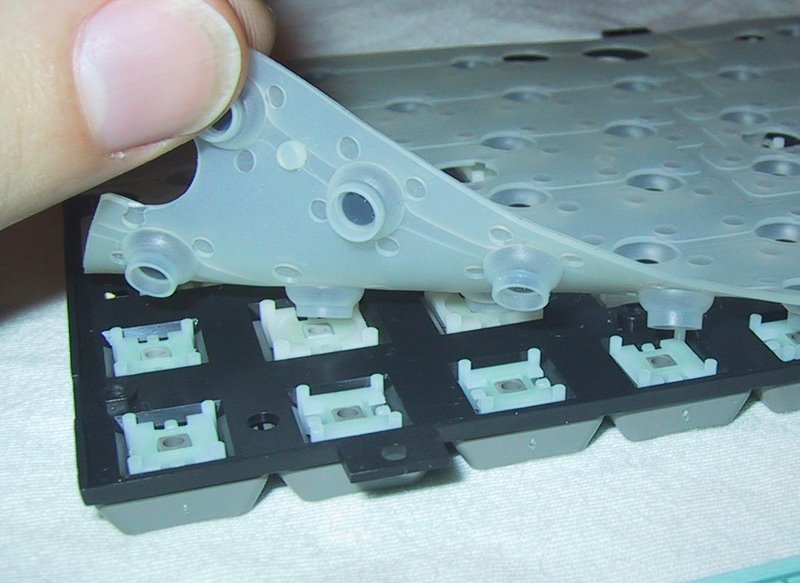Explore Various Types of Membrane Switch Technologies for Your Demands
Explore Various Types of Membrane Switch Technologies for Your Demands
Blog Article
How Membrane Layer Changes Contribute to the Sturdiness of Electronic Control Panels
Membrane buttons play a critical duty in improving the longevity of electronic control board, primarily via their multi-layered building which gives reliable defense against ecological aspects such as moisture and dirt. This style not just lessens the danger of circuit damages and deterioration yet additionally advertises ease of maintenance because of its smooth surface area. The absence of moving components substantially lowers the likelihood of mechanical failures, making membrane layer changes perfect for requiring applications. The effects of these functions extend beyond mere security, raising concerns about their more comprehensive effect on functionality and user experience.
Interpretation of Membrane Switches

Membrane layer switches are created to be thin and light-weight, making them ideal for applications where area is restricted. They can be produced in various shapes, dimensions, and colors, using versatility in style that satisfies aesthetic and useful needs. In addition, membrane buttons can integrate numerous technologies, such as tactile comments and LED indications, enhancing customer experience.
Due to their building, membrane layer switches are usually immune to dirt, dampness, and basic wear, adding to their durability popular settings. Their seamless design not only promotes very easy cleansing however also decreases the risk of mechanical failing, making them a recommended selection for producers seeking trusted interface in their electronic control panels.
Protection Versus Ecological Aspects
The design of membrane switches inherently gives a degree of protection against various ecological elements, which is essential for preserving capability in tough problems - Membrane Switch. These buttons are generally built with layers of flexible products that secure inner elements from dampness, dust, and pollutants. By enveloping the circuitry, membrane layer switches over decrease the threat of brief circuits and corrosion, which can considerably harm performance
Furthermore, making use of robust adhesives and sealants during manufacturing improves their resistance to environmental difficulties. Membrane layer switches can withstand exposure to chemicals and solvents, making them ideal for sectors such as food processing and medical care, where hygiene and cleanliness are critical. Their smooth surface layout also protects against the buildup of dust and microorganisms, helping with much easier cleansing and upkeep.
Temperature variations are an additional ecological worry, and membrane switches are crafted to Source operate properly across a variety of temperature levels (Membrane Switch). This flexibility ensures that control panels continue to be operational in different settings, from industrial atmospheres to consumer electronics
Influence On Customer Interaction
Individual interaction with digital control board is significantly influenced by the layout and performance of membrane layer switches. These switches offer a responsive user interface that enhances the general user experience, permitting for intuitive navigation and control. Their responsive nature makes certain that customers receive prompt responses upon activation, which is critical for tasks needing precision and efficiency.
Moreover, the smooth surface of membrane switches promotes very easy cleaning and maintenance, advertising customer self-confidence in the integrity of the interface. This sanitation is especially essential in settings where health is paramount, such as medical or food handling settings. Additionally, the compact and lightweight layout of membrane layer switches over contributes to the visual charm of control board, motivating customer interaction through a contemporary and streamlined appearance.
In addition, the combination of visual aspects, such as printed icons and backlighting, helps individuals swiftly recognize functions, reducing the discovering contour related to new equipment. Therefore, users can run devices extra effectively, leading to raised efficiency and satisfaction. In recap, membrane layer switches play a crucial duty in enhancing individual interaction by combining functionality, appearances, and ease of use, ultimately bring about enhanced operational efficiency.
Design Versatility and Personalization
Layout adaptability and personalization are crucial elements of membrane layer buttons, making it possible for suppliers to tailor digital control board to details applications and individual requirements. This flexibility enables for the combination of various style aspects, such as shades, graphics, and structures, which can enhance the aesthetic charm and individual involvement of the control panel.
Membrane buttons can be tailored in size and form, suiting a large range of tools and applications, from industrial machinery to consumer electronics. This convenience ensures that manufacturers can develop intuitive interfaces that align with customer assumptions and functional needs. Additionally, the capacity to include special attributes such as backlighting or tactile feedback better improves use, enabling an extra interactive experience.
In addition, the production process for membrane switches over sustains the rapid prototyping of layouts, allowing producers to iterate and improve their ideas swiftly. This capacity not just accelerates the development timeline but additionally ensures that the last item satisfies specific functional and visual requirements.

Cost-Effectiveness and Long Life
Cost-effectiveness and long life are considerable advantages of membrane switches, making them an appealing choice for suppliers and end-users alike. These buttons are informative post generally less costly to create than conventional mechanical switches, largely as a result of their simplified manufacturing procedures and the lowered number of elements needed. This cost benefit expands not only to first manufacturing but also to long-term operational expenses, as membrane buttons typically call for less maintenance and have a reduced failure price.
Additionally, the long life of membrane layer changes adds to their total worth. Created from sturdy materials, they are resistant to environmental variables such as dampness, dust, and chemicals, which can cause early wear in various other switch types. The absence of moving components decreases mechanical failure, enabling membrane changes to maintain capability over prolonged durations.
This sturdiness is particularly advantageous in applications calling for constant efficiency under requiring conditions, such as clinical tools and commercial devices. Eventually, the combination of cost-effectiveness and longevity makes membrane switches over an economically viable choice for manufacturers, giving trustworthy options that stand up to the examination of time while enhancing financial factors to consider.
Final Thought
In conclusion, membrane switches significantly improve the durability of electronic control panels via their robust check over here construction and protective attributes - Membrane Switch. In general, membrane layer changes represent a trusted and economical option for improving the long life and performance of digital control systems.
Report this page